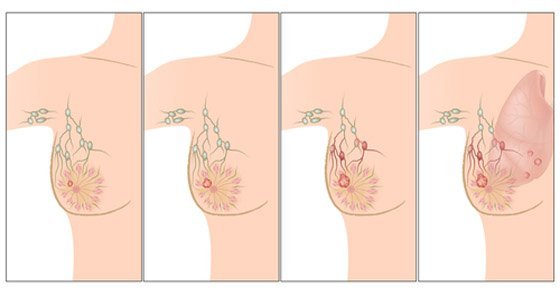Breast cancer is a complex disease with multiple contributing factors that can influence an individual’s risk. Understanding these causes is crucial for early detection, prevention, and informed healthcare decisions. This article explores the primary causes of breast cancer, providing insights into genetic, reproductive, and lifestyle-related risk factors.
Genetic Mutations: The Inherited Risk
Genetic mutations play a significant role in breast cancer development, with BRCA1 and BRCA2 being the most well-known genetic markers. Approximately 5-10% of breast cancers are hereditary, primarily linked to these specific gene mutations. Women with BRCA1 or BRCA2 mutations have a dramatically increased lifetime risk of breast cancer – up to 72% compared to the general population’s 12% risk.
These mutations can be inherited from either parent and affect the body’s ability to repair damaged DNA or suppress tumor growth. While not all individuals with these genetic mutations will develop breast cancer, they face a substantially higher risk and often require more frequent screening and preventive measures.
Reproductive History: A Critical Factor
A woman’s reproductive history significantly impacts her breast cancer risk. Several key factors contribute to this risk:
- Early menstruation (before age 12)
- Late menopause (after age 55)
- First full-term pregnancy after age 30
- Never having been pregnant
Hormonal exposure plays a crucial role in these risk factors. Longer periods of menstruation and hormone exposure can increase the likelihood of breast cancer development. Conversely, breastfeeding has been shown to potentially reduce breast cancer risk, with longer breastfeeding periods offering greater protective benefits.
Dense Breasts: A Hidden Challenge
Breast density is an often-overlooked risk factor that can complicate both cancer detection and increase cancer risk. Women with dense breasts have more connective and glandular tissue than fatty tissue, which makes mammograms more challenging to interpret. Research indicates that women with dense breasts have a 4-6 times higher risk of developing breast cancer compared to women with average breast density.
Personal and Family Medical History
Previous breast conditions and family history are critical risk indicators. Women who have had previous breast cancer or certain noncancerous breast diseases like atypical ductal hyperplasia have an increased risk of future breast cancer. Additionally, having a first-degree relative (mother, sister, or daughter) with breast cancer doubles a woman’s risk.
Lifestyle Factors: What You Can Control
Several lifestyle choices can significantly impact breast cancer risk:
- Physical Activity: Regular exercise can help reduce breast cancer risk by maintaining a healthy weight and regulating hormones.
- Obesity: Excess body weight, particularly after menopause, increases estrogen production and breast cancer risk.
- Alcohol Consumption: Regular alcohol intake has been linked to increased breast cancer risk, with even moderate drinking showing potential correlation.
- Hormone Replacement Therapy: Combined estrogen and progesterone therapy can increase breast cancer risk, particularly with long-term use.
Radiation Exposure: A Quantifiable Risk
Previous radiation therapy, particularly to the chest area, can increase breast cancer risk. Individuals who received radiation treatment for conditions like Hodgkin’s lymphoma before age 30 have a higher likelihood of developing breast cancer later in life.
Conclusion: Knowledge is Prevention
While some breast cancer risk factors cannot be changed, understanding these causes empowers individuals to make informed health decisions. Regular screenings, maintaining a healthy lifestyle, and discussing personal risk factors with healthcare professionals are crucial steps in breast cancer prevention.
Remember, having risk factors doesn’t guarantee cancer development, and many individuals with multiple risk factors never develop the disease. Conversely, some people with no known risk factors do develop breast cancer. The key is awareness, proactive health management, and regular medical consultations.





